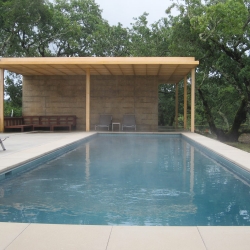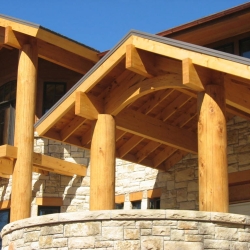Alaska Yellow Cedar: The most valuable species in Alaska
Alaskan Yellow Cedar is the hardest known cedar in the world. Extremely tight grained, the average growth rings per inch (RPI) for southeast Alaska Yellow Cedar exceeds 40 RPI (research results from the Ketchikan Wood Technology Center). The use of a magnify glass is required to count the growth rings. This species represents approximately 10% of the net volume of timber that grows in southeast Alaska. Alaska Yellow Cedar is famed for its extraordinary natural resistance to rot, decay, weather and insects.
Studies have shown that the mechanical properties of lumber sawn from Alaska Yellow Cedar trees that have been dead for over 80 years meet or exceed those properties of lumber sawn from living trees of other softwood species. This cedar has a reputation for being able to be worked into very tight joinery. The Japanese have used this exquisite species for centuries to build their temples and teahouses. A very large percentage of Alaska Yellow Cedar is shipped to the Far East, which makes it difficult to source in North America.
-
Extremely tight grained – average growth rings per inch exceeding 40
-
Extraordinary natural resistance to rot, decay, weather, and insects
-
Well suited for tight joinery and commonly used for Japanese temples and teahouses
The average diameter of the tree ranges from 2 – 4 feet with a height of 80 – 100 feet. The sapwood of this species is narrow and slightly lighter than the bright clear yellow heartwood. The wood is fine textured, straight grained, easily worked and durable. The lumber from Alaska Yellow Cedar is readily worked by both hand and machine tools. It nails and glues well and holds paint, stains, and varnishes. It also has a uniquely pleasing aroma.
Beautiful silver gray color if left unfinished – “Cape” style homes in the Northeastern US
Alaska Yellow Cedar is extremely diverse in construction application, from structural timbers to interior trim, decking, siding, and paneling. The exterior applications such as decking and siding are desirable because of Alaska Yellow Cedar’s natural resistance to rot, insects and decay. When left unfinished, it weathers to a beautiful silver gray color. This results in the same appearance, as you will see on many of the “cape” style homes in the Northeastern United States.






